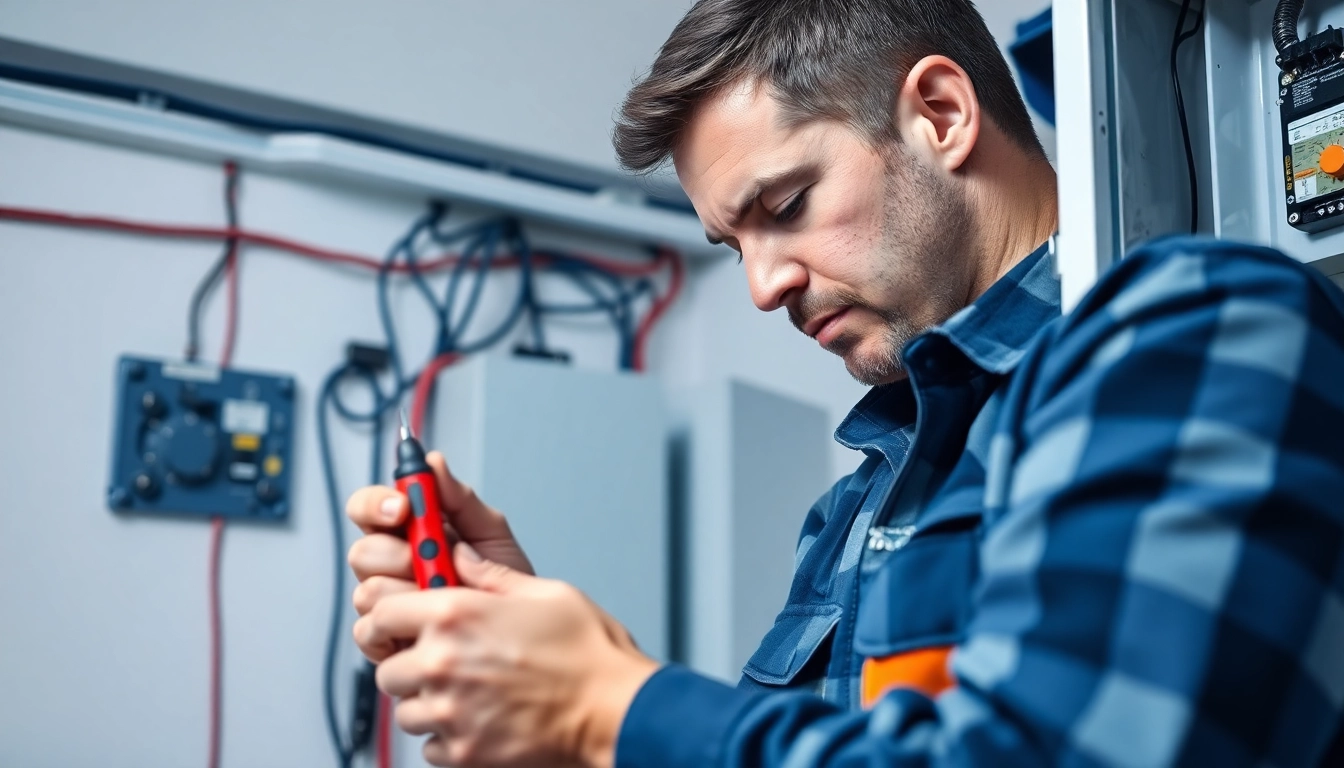Introduction to Electrical Panel Upgrades
The electrical panel, also known as a circuit breaker panel or service panel, is the core of your home’s electrical system. It regulates all electrical circuits in your home, safely distributing electricity to your appliances and electronics. However, as your power needs increase with modern technology and appliances, your existing electrical panel may not suffice. This is where an Electrical Panel Upgrade becomes essential. In this comprehensive guide, we will explore the necessity of upgrading your electrical panel, the signs to look for, the costs involved, and how to prepare for a successful upgrade.
What is an Electrical Panel?
An electrical panel is the distribution center for your home’s electrical system. It contains the circuit breakers, which serve as safety devices that automatically shut off power when there is an overload or short circuit. The panel is also responsible for directing electricity from the utility company to various circuits that power different areas and devices in your home.
Signs You Need an Electrical Panel Upgrade
Several signs indicate it may be time to consider upgrading your electrical panel:
- Frequent Breaker Tripping: If your circuit breakers are frequently tripping, it could signify that your electrical panel is overloaded.
- Flickering Lights: Lights that flicker or dim when you turn on appliances may indicate that your electrical panel cannot handle the load.
- Old Panel: If your panel is over 20 years old, it may not meet modern electricity demands and safety standards.
- New Appliances: If you’ve installed significant loads like an electric vehicle charger or a hot tub, your current panel may not provide adequate power.
- Presence of Fuses: If your panel uses fuses instead of circuit breakers, it’s a sign that you should upgrade to a modern system.
The Benefits of Upgrading Your Electrical Panel
Upgrading your electrical panel offers numerous advantages, including:
- Increased Power Capacity: Upgraded panels can handle higher amperages, allowing you to power more devices simultaneously.
- Improved Safety: Modern panels come with enhanced safety features, reducing the risk of electrical fires.
- Increased Home Value: An upgraded electrical panel can make your home more attractive to buyers, as it signifies a well-maintained electrical system.
- Future-Proofing: A new panel can accommodate the addition of home automation systems and electric vehicles, preparing your home for future technological advancements.
Factors Influencing Electrical Panel Upgrade Costs
Labor and Materials Costs
The cost of upgrading your electrical panel varies depending on several factors, including labor rates and the materials used. On average, labor costs can range from $50 to $120 per hour, while the electrical panel itself could cost between $100 and $500. The total cost of an upgrade can range from approximately $800 to $4,000, covering both labor and materials.
Permits and Regulations
Most areas require permits for electrical work, including panel upgrades. These permits safeguard homeowners by ensuring the work complies with local building and safety codes. Permit costs vary by location, adding another layer to the overall expense. Your electrician will usually handle the permit process, but it’s wise to verify this service before proceeding.
Utility Company Requirements
Once an electrical panel upgrade is planned, you must communicate with your utility company, as they may have specific requirements regarding the service upgrade. This could involve an inspection and approval process, which could delay your upgrade timeline.
How to Prepare for an Electrical Panel Upgrade
Assessing Your Current Electrical System
Before upgrading, assess your current electrical system. Identify areas where you frequently experience issues, such as overloaded circuits or flickering lights. Additionally, evaluate any plans for adding new major appliances or expansions in your home that will require more power.
Choosing the Right Electrician
Choosing a qualified electrician is crucial for successfully upgrading your electrical panel. Look for professionals who have relevant experience, reasonable reviews, and sufficient licensing and insurance. A good electrician will provide an upfront estimate, detail the scope of work, and communicate any potential issues during the upgrade process.
Understanding the Upgrade Process
Understanding what happens during the upgrade can ease anxiety. The upgrade process typically involves the following steps:
- Inspection of the current panel and electrical system.
- Obtaining necessary permits and approvals.
- Disconnecting the power supply.
- Removing the old panel and installing the new one.
- Connecting wires and breakers to the new panel.
- Testing the new system and restoring power.
- Final inspection to ensure compliance with safety codes.
Common Mistakes to Avoid During an Upgrade
Underestimating the Required Amperage
A common mistake homeowners make is not considering future power needs when upgrading their panel. Underestimating amperage may lead to a panel that becomes insufficient quicker than expected. Consult with your electrician to determine the right amperage based on your electrical load calculations.
Ignoring Local Building Codes
Each locality has specific building codes that govern electrical installations. Ignoring these regulations can lead to code violations, fines, or even unsafe system operations. Ensure your electrician is familiar with local codes and regulations.
Overlooking Safety Precautions
Safety should be a priority when upgrading your electrical panel. Ensure that the electrician adheres to all safety precautions during the installation process, such as wearing protective gear and properly isolating electrical sources to prevent shock or injury.
Post-Upgrade Considerations and Future-Proofing
Routine Maintenance for Your New Electrical Panel
Once your electrical panel upgrade is complete, regular maintenance is key to ensuring its longevity and reliability. This includes periodic inspections by a licensed electrician, cleaning dust from the panel, and testing circuit breakers periodically to ensure they function properly. Owners should also familiarize themselves with the panel’s layout and understand the function of each circuit for efficient troubleshooting.
Integrating Smart Technology
Upgrading your electrical panel opens the door for smart home technologies. Smart panels allow homeowners to monitor and control electricity consumption, appliances, and even security systems remotely. Consider integrating smart breakers or whole-home automation systems that work in conjunction with your new panel for added convenience and energy efficiency.
Planning for Future Electrical Needs
As technology continues to advance, your electrical needs will likely evolve. When upgrading your panel, think about future electrical requirements, such as electric vehicle charging stations, home networking, or renewable energy sources such as solar panels. Consult your electrician to ensure that the panel you install supports these anticipated upgrades.
In conclusion, upgrading your electrical panel is more than just a structural change; it is a necessary action towards ensuring the safety, efficiency, and functionality of your home. By recognizing the signs that indicate an upgrade is needed, understanding the costs involved, and preparing adequately, homeowners can navigate the process successfully and reap the long-term benefits of an upgraded electrical system.



